Integrated Approach for Successful Design of Bioprocesses
- process optimization with respect to economic and environmental impact
- considering technology, energy efficiency and economics as key process evaluation factors
- minimizing waste and valorising waste streams
- enabling fast and reliable evaluation of many different process option and alternatives
- early on identifying and mitigating risks related to process scale-up (technology, energy & economics)
- supporting and guiding process scale-up activities
- guiding R&D activities and setting targets for economically optimal design (yields, temperatures, pressure, etc.)
- supporting process development activities through the whole project life cycle and at each TRL stage
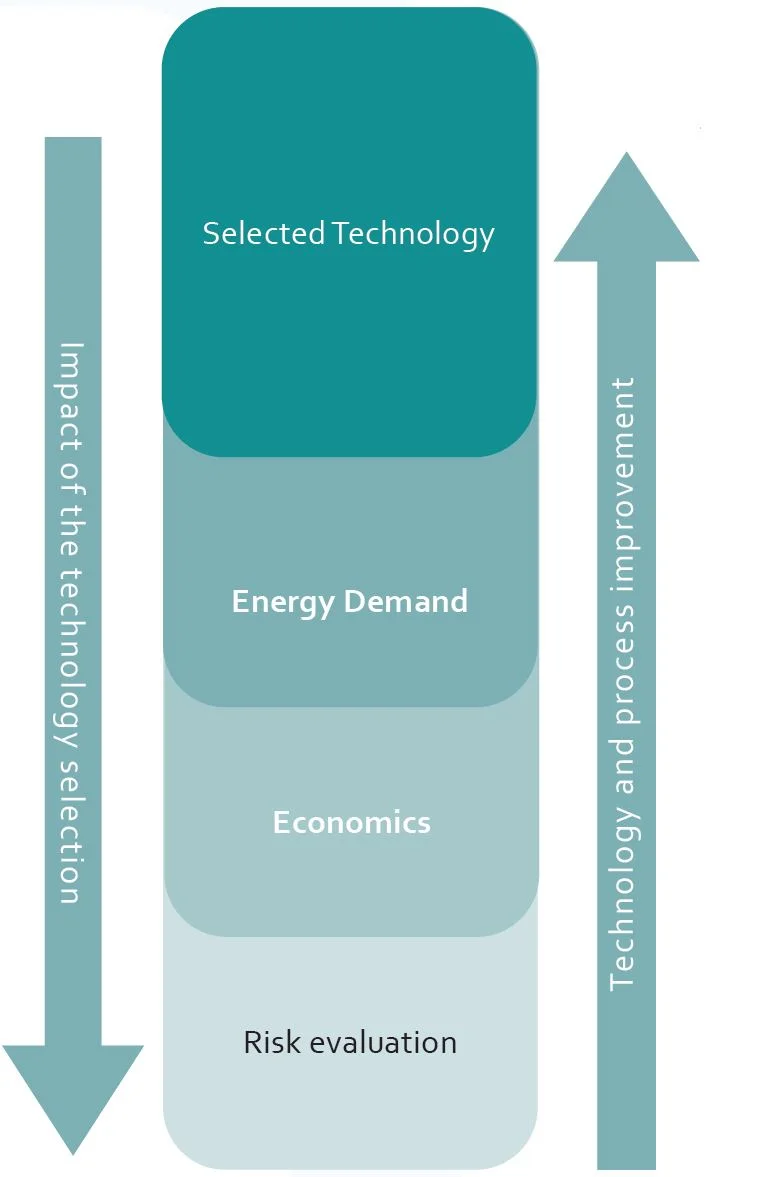
Today, it is generally recognised that THE challenge for biobased processes is scaling up from pilot or demo scale to commercial scale. Despite massive investments in research and development, many companies often fail to commercialize their innovative bioprocess.
This, in particular, goes for bioprocesses that consider new and unproven technologies. The impact of new technology on process feasibility, energy consumption and economics is generally not well understood or properly evaluated. This is also one of the main reasons why bioprocesses fail to go beyond the pilot scale or become commercialised.
An important aspect in this matter is that technology, energy and economics are evaluated separately whilst an integrated approach will reveal changes in economics directly related to changes in the process.
INTEGRATED APPROACH TO PROCESS DEVELOPMENT
The key to successful bioprocess development with respect to technology, sustainability, cost and time to market lies in identifying opportunities, risks and limitations related to technology selection, design and scale up from day 1 of the process development.
In conventional approach, most of the key process parameters and design features are determined and locked in the early development phase. Making wrong decisions early on becomes very costly in the later project stages when engineering and construction is carried out and the design has to be reconfigured or reengineered. Therefore, it fully makes sense to put more effort in the early development phase, when spendings and costs are the lowest and the possibility to influence design and final project costs are the greatest (see graph below).
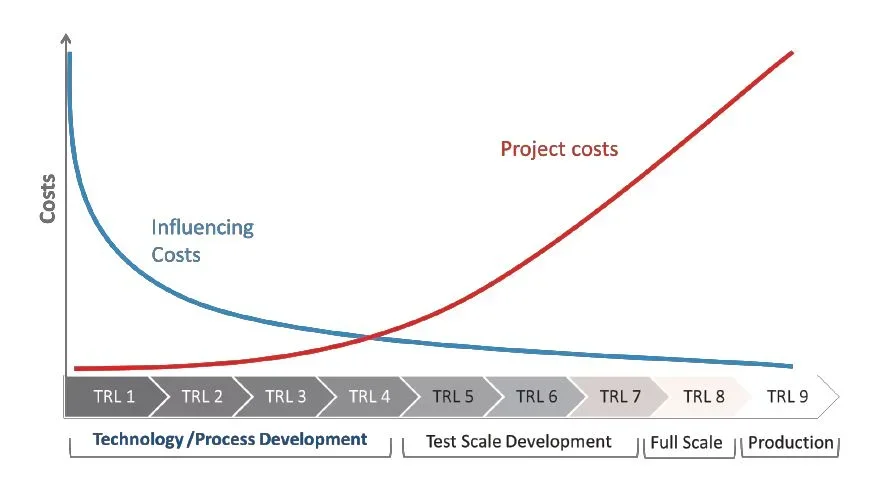

Integrated process design philosophy provides cost effective development of industrial bioprocesses by combining sophisticated tools, methodologies and expert know-how to evaluate bioprocesses in the early research phases. Main characteristics of an integrated approach are:
- Early phase process evaluation (starting at technology readiness level TRL 1)
- Technology, energy efficiency and economics are key interconnected process evaluation factors
- Impact beyond process boundaries is evaluated
The core of our approach is a sophisticated model which can simulate different technologies, process configurations and operation scenarios. With this model-based approach we have endless possibilities to study and to optimize key process parameters such as plant capacity, energy, CAPEX & OPEX, waste and emissions.
Simultaneously the model is used to analyse and design individual unit operations e.g. reactors, distillation columns or turbines and assess the impact of the design choices of individual process units on the overall plant performance, its controllability and safety but also economic effects such as CAPEX and OPEX.


The model is continuously updated and refined as more knowledge and information flows in from R&D or technology providers. The latest developments are reflected in the design and the process becomes closer to reality, thus shortening the time to basic or detailed engineering.
This also allows R&D to evaluate their selected technology for feasibility at each moment in development and understand the impact of different process parameters on energy efficiency, emissions and the overall economics of the design.
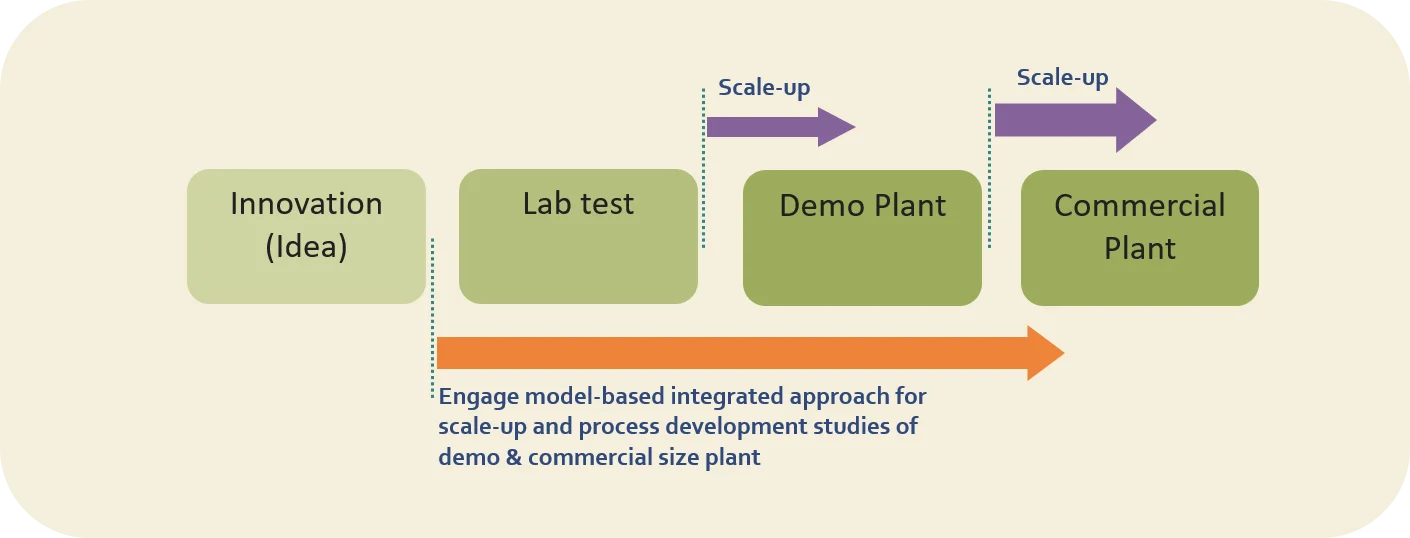
KEY FEATURES OF INTEGRATED APPROACH
Challenges when scaling up to demo or commercial scale are very often not visible at lab scale. Applying integrated model-based evaluation in early development stages, as proposed by integrated approach, will reveal these challenges and provide guidance to solve them. Part of this visualization lies the application of Monte Carlo based risk assessment tools.
Risk evaluation provides fact based information about the nature and magnitude of identified challenges during process development. Our experience and expertise to combine all key parameters in terms of process, economics, energy and logistics provides the basic needs for successful risk assessment and provide solutions when they most matter: before making the wrong decisions!
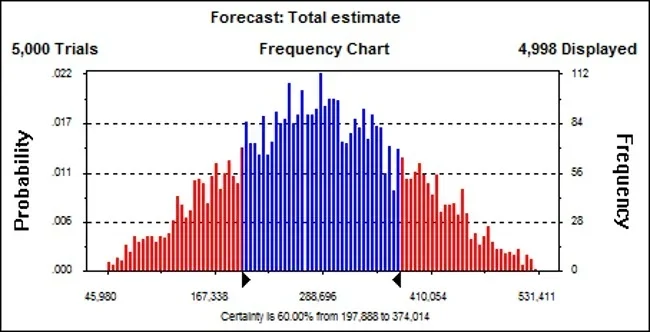
Direct calculation and breakdown of energy demands and carbon emissions (of the ongoing design) is key for comparing different technologies. The integrated approach applies in-depth energy analysis and sophisticated tools and methodologies to locate major energy saving opportunities which will deliver to the most energy-efficient and cost-effective process design. The results of the process model are directly fed to the energy analysis tool for optimising process design with respect to energy and emissions. Moreover, reducing process energy demands leads to reduction of capital and operating costs of the onsite energy generation facilities.
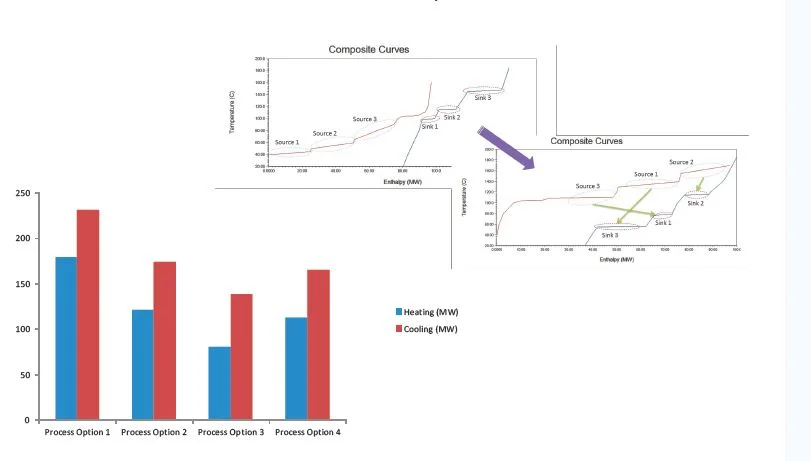
The economic evaluation allows for a detailed analysis of capital and operational costs. But it is not limited to these: also challenges that may not seem so obvious at first glance, such as logistics or choosing the best location (worldwide), become visible and can easily be analysed.
Within the integrated approach the economic model is linked to the process model allowing for an interactive equipment sizing and estimation of capital and operating costs. Therefore, the integrated model approach enables a fast and a detailed economic assessment of different process configurations, different production scales, varied operating parameters, etc. The results of the economic model are then used to assess the financial performance of different project scenarios, in particular calculating return on investment (ROI), net present value (NPV) of the project, payback period or minimum selling price of new products.
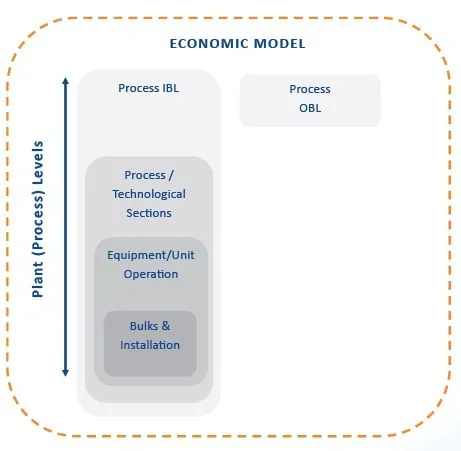
BENEFITS OF THE INTEGRATED APPROACH
- Fast and cost effective process development
- Fast and reliable evaluation of many different process option and alternatives
- Guiding R&D activities and setting targets for techno-economically optimal design (yields,
- temperatures, pressure, etc.)
- Supporting and guiding process scale-up activities
- Less redesign and reengineering in later development stages (TRL 5 - 8)
- Minimizing waste and valorisation of waste streams
- Mitigating risks related to process scale-up (technology, energy & economics)